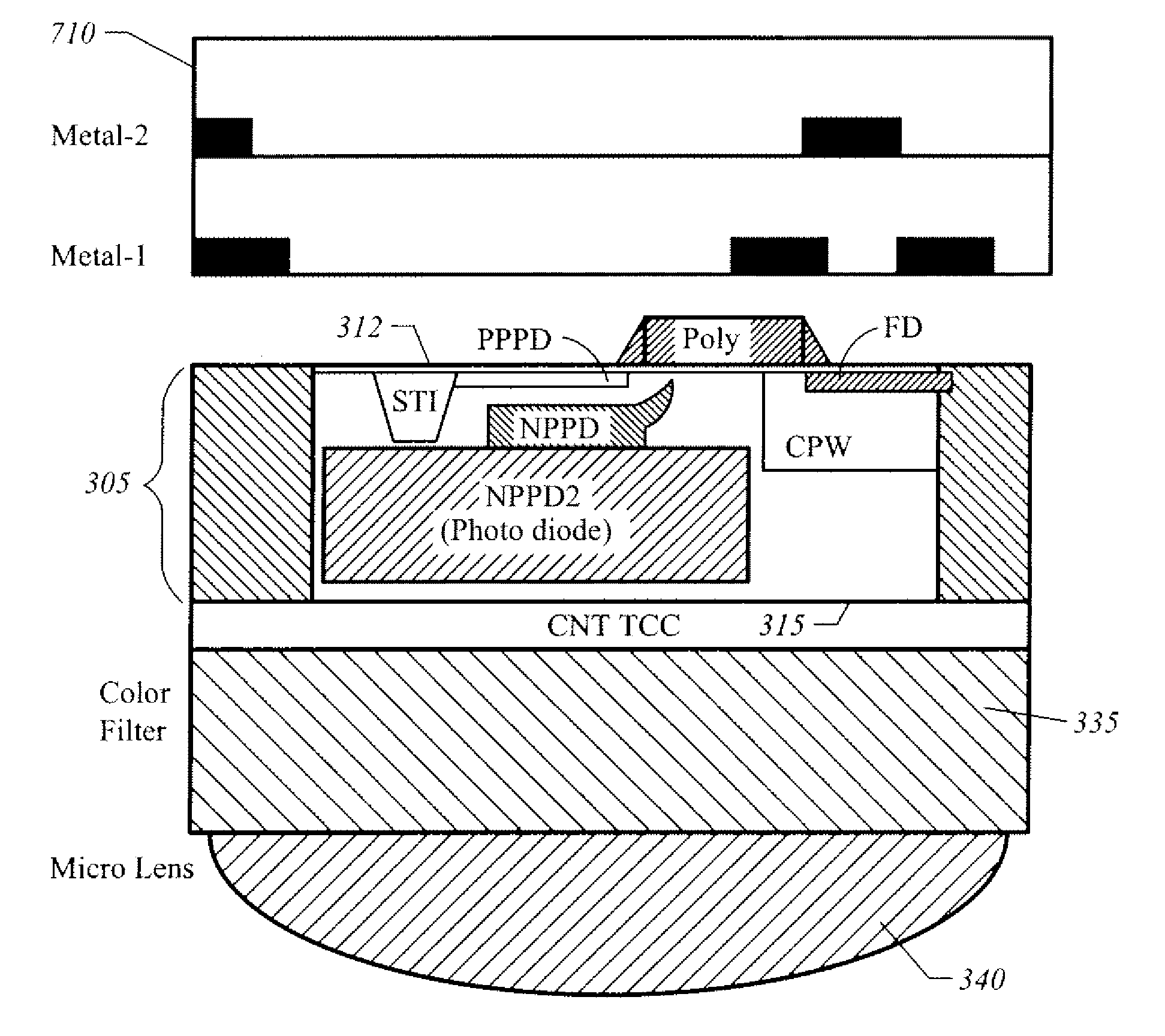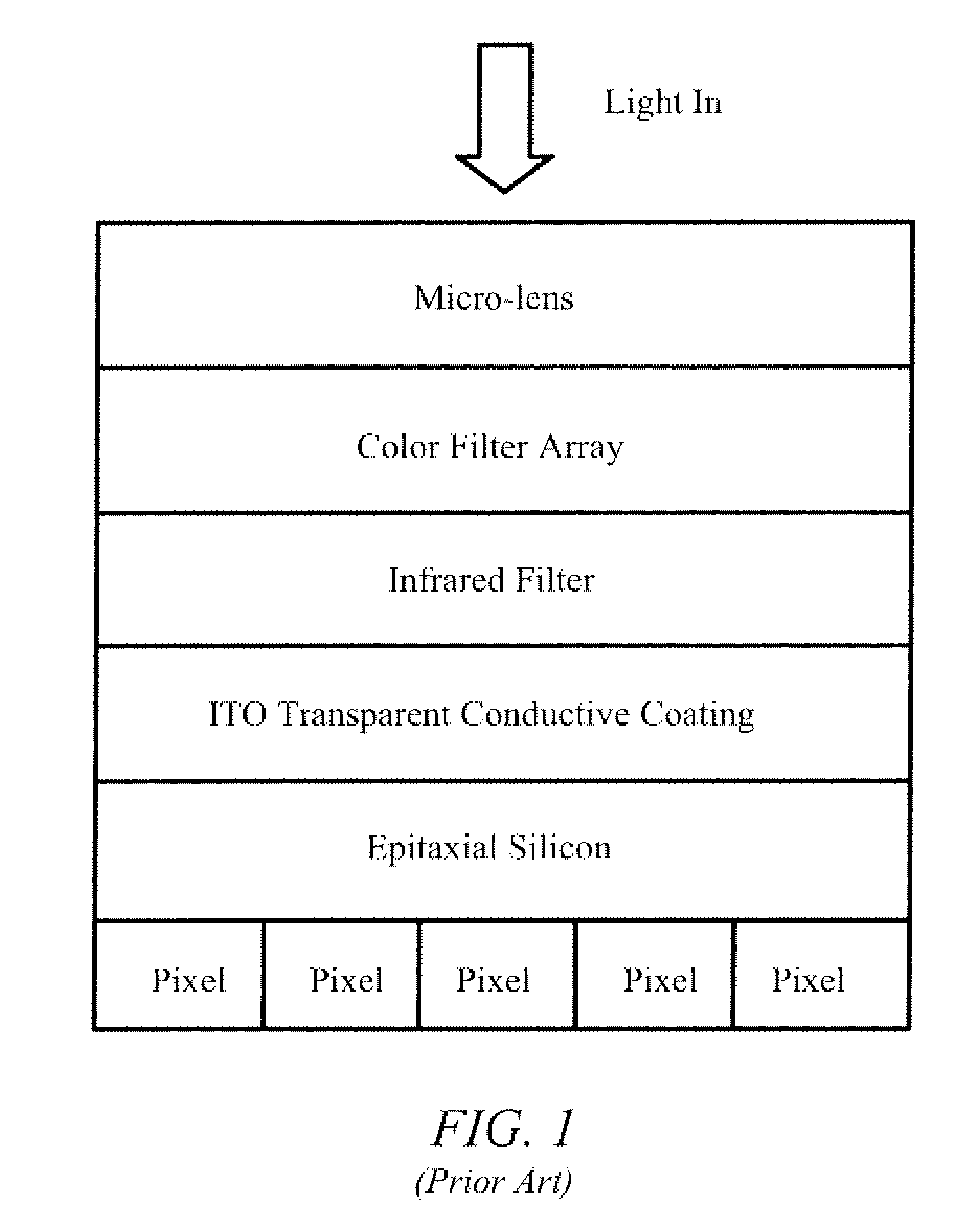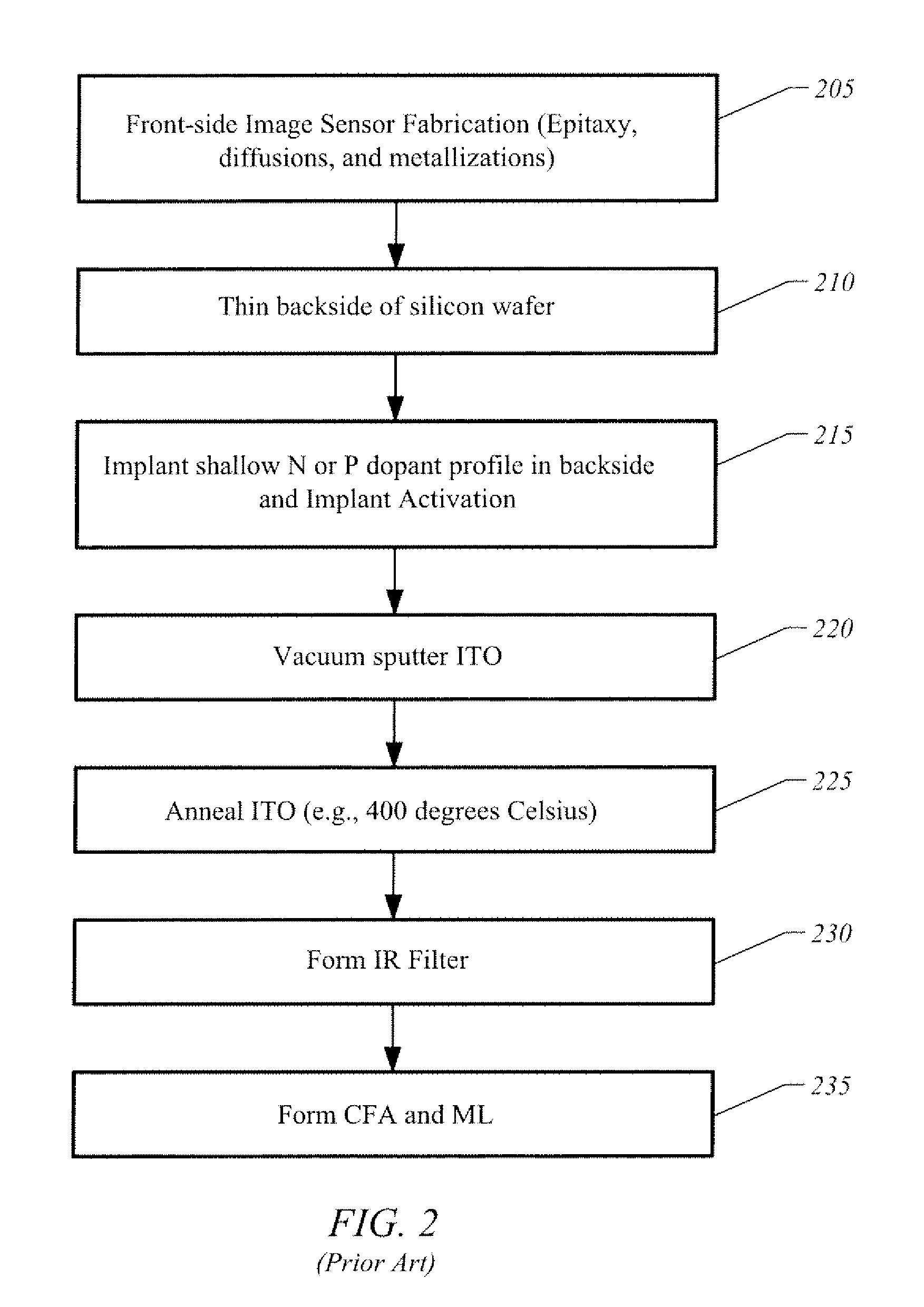Apparatus And Method For Image Sensor With Carbon Nanotube Based Transparent Conductive Coating
an image sensor and carbon nanotube technology, applied in the field of apparatus and method of image sensor with carbon nanotube transparent conductive coating, can solve the problems of difficult to achieve a high fill factor, inability to detect visible light in the sensor, and inability to achieve high fill factor
- Summary
- Abstract
- Description
- Claims
- Application Information
AI Technical Summary
Benefits of technology
Problems solved by technology
Method used
Image
Examples
Embodiment Construction
[0019]FIG. 3 illustrates a Back Side Illuminated (BSI) image sensor 300 in accordance with one embodiment of the present invention. In one embodiment BSI image sensor 300 is a CMOS image sensor formed on epitaxial silicon. A semiconductor substrate 305 has a front surface 310 and a back surface 315 (hereinafter “backside 315”). An array of photo-sensitive pixels 312 is formed in substrate 305. The substrate 305 is thinned such that a comparatively small thickness of epitaxial silicon 314 remains below pixels 312. For example, a conventional fabrication process may be used to perform front-side processing on a conventional silicon wafer, such as growing an epitaxial layer on a silicon wafer, performing masked diffusion processes to define n-doped and p-doped pixel regions of photodiodes and other pixel elements, and forming electrical contacts and electrical interconnections to the front-side. After front-side processing is completed the semiconductor wafer is thinned down (e.g., thi...
PUM
 Login to View More
Login to View More Abstract
Description
Claims
Application Information
 Login to View More
Login to View More - R&D
- Intellectual Property
- Life Sciences
- Materials
- Tech Scout
- Unparalleled Data Quality
- Higher Quality Content
- 60% Fewer Hallucinations
Browse by: Latest US Patents, China's latest patents, Technical Efficacy Thesaurus, Application Domain, Technology Topic, Popular Technical Reports.
© 2025 PatSnap. All rights reserved.Legal|Privacy policy|Modern Slavery Act Transparency Statement|Sitemap|About US| Contact US: help@patsnap.com



